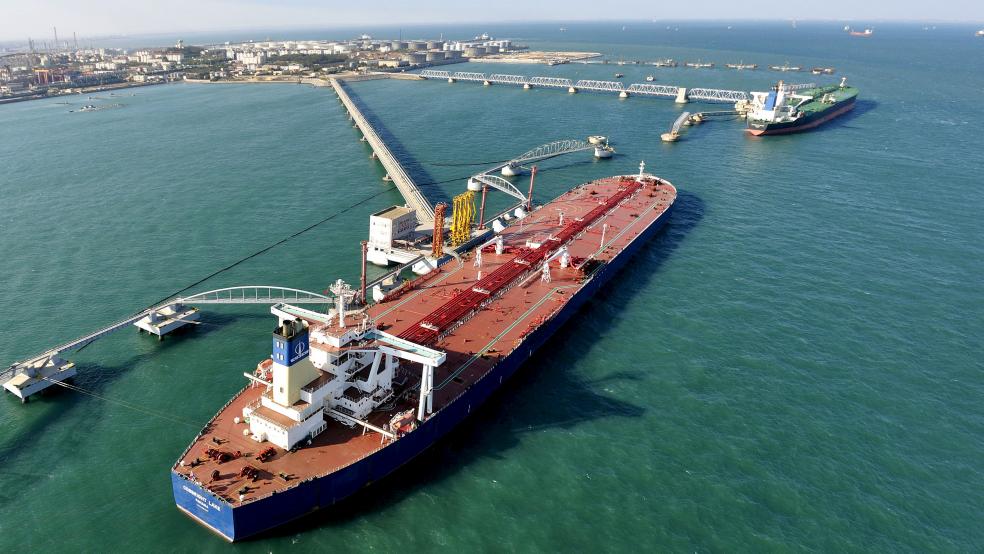The OPEC deal will lead to an ongoing tightening of the crude oil market, putting a floor beneath crude prices in the $50s per barrel in the second half of 2017, according to Helima Croft of RBC Capital Markets. She said that prices should ultimately “grind higher into the $60s” by the fourth quarter, with an average price for WTI expected at $61. Political and economic pressure surrounding Saudi Aramco’s IPO and Russian elections – both of which are slated for 2018 – will ensure that OPEC and non-OPEC does “whatever it takes” to keep oil prices stable and on the rise.
But there are a lot of factors outside of OPEC’s control. High up on that list is the role of China, a country that has received little attention in the oil world as of late amid all the furor over the OPEC vs. U.S. shale debate. But China could make or break the oil market this year and next, depending on what happens with its economy. "If you wanted to know where the downside risk is, it is not in OPEC's decision or in U.S. driving demand or in global inventories rebalancing. I think China is the big source of concern," Prestige Economics President Jason Schenker told CNBC.
Related: Why OPEC's Production Cuts Haven't Boosted the Price of Oil
Moody’s Investors Service downgraded China’s credit rating on May 24 to A1 from Aa3, explaining that the Chinese government might try to juice the economy with higher spending levels, which will lead to ballooning debt. The decision from Moody’s is ominous as it is the first credit downgrade for China in nearly three decades. Moody’s expects economic growth to continue to slow in China, putting a heavier burden on government stimulus when debt has already started to become a concern.
"It's really the size of the leverage, the trends in leverage as well as the debt servicing capacities of the institutions that have that debt. When growth slows, then that points toward slower revenue growth, probably slower profitability and somewhat weaker debt servicing capacity," Marie Diron, senior vice president for Moody's sovereign rating group, said on CNBC's “Street Signs.”
Credit downgrades themselves can add costs as debt finance becomes more expensive. "Downgrade(s) by rating agencies could potentially erode the financial soundness of China, creating the risk of a negative feedback loop," ANZ wrote in a research note.
Related: Oil plunges 5 percent on disappointment with OPEC cuts
A softer Chinese economy has enormous implications for the oil market. China is the largest crude oil importer in the world and it is expected to account for one of the largest sources of demand growth this year – the IEA expects Chinese oil demand to expand by 400,000 barrels per day to 12.3 million barrels per day (mb/d). With worldwide demand growth estimated at 1.3 mb/d this year, China will essentially account for nearly one-third of the global increase. If it falters, demand scenarios go out the window. "Without China, the oil market cannot survive," Fereidun Fesharaki, founder of FGE, told CNBC.
At the same time, if China surprises with a stronger economic performance going forward, it could also boost momentum to a tightening oil market. Not only is China expected to post strong demand figures – assuming its economy doesn’t slow too much – but its domestic production is falling. That means it will need to import more crude to make up for the shortfall. China’s state-owned oil companies preside over expensive, aging and depleting oil fields. The collapse of oil prices three years ago put them in a bind, forcing them to cut back on investment and even shutter older fields that are no longer worth the trouble. China’s oil production fell by 300,000 bpd in 2016 and the IEA sees output dipping by an additional 185,000 bpd this year.
The end result will likely be much steeper imports from China – a bullish trend for oil. A rather aggressive forecast comes from FGE’s Fesharaki, which expects imports to rise by 900,000 bpd this year compared to 2016.
There is a great deal of uncertainty surrounding these figures, but they highlight the fact that China really will make or break the oil price rally this year.
This article originally appeared on OilPrice.com. Read more from OilPrice.com:
What Is Behind The Surge Of Russian Oil Exports To India?




